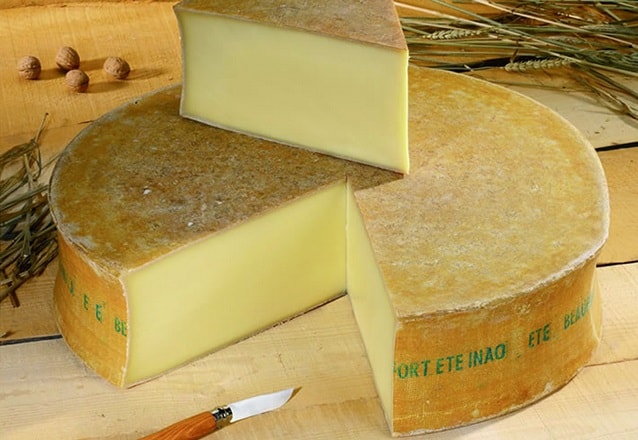
Cooked, pressed cheeses are large and have a higher level of dry matter (60 to 63%) than their uncooked relatives; they are drained intensely with the help of mechanical acceleration.
The principles of fabrication are similar to uncooked, pressed cheeses.
To accelerate the draining, the curds are cut and mixed, so that the whey can drain away. This stage is intensified with the use of heat, the vat is heated to between 52 and 55°C, this is what characterises the cheese as being ‘cooked’ and this lasts for 30 to 60 minutes. The cheese which is obtained from this process has a high dry matter and can be kept for a long time.
There are two types of cooked, pressed cheeses:
- Cheese with an open pate, of large size (65 to 110kg) like Emmental: the holes of 15 to 25mm scatter the cheese, they are subject to propionic fermentation whilst being matured in warm cellars (18 to 22°C)
- Cheese with a closed pate, of a smaller size (25 to 55kg) like Comté have no holes, or very few with a diameter of 8 to 10mm. Propionic fermentation is inhibited by the coolness of the cellar in which they are matured (between 10 and 14°C).
